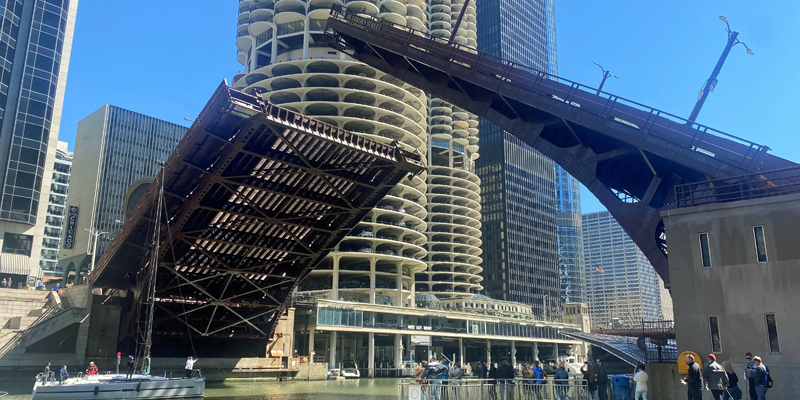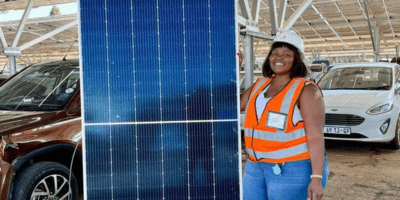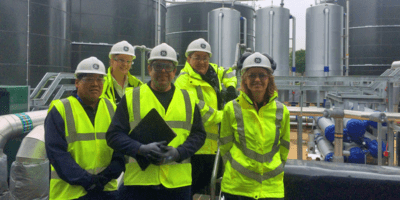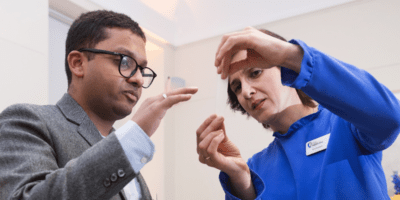Diana Jandreski is a Florida-based licensed professional mechanical engineer specialising in movable bridges at HDR, an employee-owned design firm. Diana has dual background in mechanical and structural engineering that she uses to work on the rehabilitation, design, and inspection of mechanical components of movable bridges. Diana holds a bachelor’s degree in mechanical engineering and a master’s degree in ‘Civil Engineering Concentrated in Structures’, both of which are from Stevens Institute of Technology.
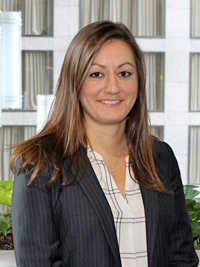
“The point of International Women in Engineering Day is to celebrate those women who have made the choices to become engineers, and perhaps even more importantly, to show the younger generations that you can be successful in any field YOU choose.”
Finding the path to engineering
I have a dual background including both mechanical and structural engineering based on my graduate and undergraduate schooling and within my career. I also pick up on electrical engineering along the way as it directly overlaps with my work. I am very passionate about what I do and have greatly enjoyed my journey.
When I graduated from high school, I had been accepted to Rutgers University but due to certain personal circumstances I was not able to attend and had to take some time off from school. Instead, I worked two jobs and during this time had the opportunity to learn more about myself as a young adult. I see now that it was a blessing in disguise that led me to my current path.
After some time, I proceeded to put myself through school by starting with an associate degree in science at a community college, followed by a bachelor’s degree in mechanical engineering and a master’s degree in civil engineering concentrated in structures, both from Stevens Institute of Technology.
I was always mechanically inclined and loved taking things apart and fixing them. Math and science-focused classes came naturally to me, even since I was a young girl. While working on my bachelor’s degree I started to question the career options I would have as a mechanical engineer. These mainly seemed to be working on HVAC (heating, ventilation, and air conditioning), defense weapons, or automotive. None of these appealed to me for a variety of reasons, so, I began exploring structures and more specifically bridges. I kept my discipline mechanical and added a minor in structural engineering to get into the master’s programme that I wanted.
As I entered the workforce, I started my career working as a structural engineer on fixed bridges. Soon after, I discovered movable bridges! I spent the first few years learning as much as I could about fixed bridges before I was able to transition to movable bridges. I am now a mechanical engineer specialising in movable bridges. I am so grateful for the choices I have made and for being able to stay true to myself along the way.
Movable bridge engineering explained
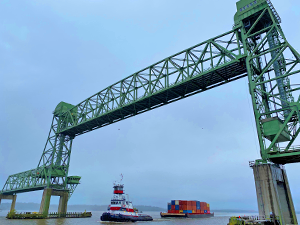
For the most part, there are three main types of work that we do on movable bridges including inspection, rehabilitations, and brand new design. All three types of work are meant to ensure the safety of the users including vehicles, pedestrians, trains, and boats as well as providing reliable operation.
When working on an inspection project, a routine check of the bridge and its individual components is performed by a team of engineers. As a mechanical engineer, we inspect the machinery throughout the bridge, which includes the operating machinery to open and close the bridge, as well as any secondary and supporting machinery. We assess the current condition, take photos, make repair recommendations, and create a report to memorialise the inspection and track the history.
During a rehabilitation project we also perform an inspection, however, this would be more in-depth and focused on determining which specific components need repair or replacement. After that the mechanical engineers design the new machinery or specify the requirements to repair the existing machinery. This is done through performing calculations, creating detailed design drawings or plans, and writing technical specifications. The objective with a rehabilitation is to extend the life of the bridge and make it more reliable.
With a brand-new design, we are starting from scratch to either construct a movable bridge at a new site or, more commonly, replace an existing movable bridge that is close to reaching the end of its life cycle and is beyond repair. This takes a lot of manpower and heavy coordination between the three disciplines. We still perform calculations, create design drawings, and develop technical specifications, only tons more. Personally, my favorite is rehabilitations as I enjoy fixing things.
Once the design plans and specifications for a rehabilitation or new design are complete, our client or the owner of the bridge, releases the documents into the industry for bidding. Contractors submit their best price on the work to win the jobs, and they are the ones that physically perform it. I have many friends who unknowingly have said: “Diana builds bridges,” and I always politely correct them. (Engineers design the bridges; contractors build them.)
Finding new limits
Prior to COVID, my workdays were spent in the office along with the rest of my coworkers. The main way that COVID impacted me is that we were all abruptly forced to work from home, like so many others. It forced us to discover new ways to collaborate through more video calls and screen sharing.
My project teams were proud to say that we did not skip a beat and were still on time with all client project deliverables. And along with the world, we’re still being pushed to new limits every day.
Taking ownership and completing quality work to deliver a quality product
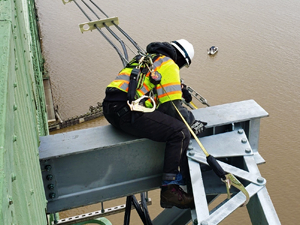
I believe I have two main purposes in my role. The first is on a personal level; it’s caring for and restoring the bridge. I take ownership of my work. When I have a project, regardless of the type of work, I focus on completing quality work to ensure we deliver a quality product.
Over my career thus far, I have been mainly performing tasks and further developing my technical skills. Movable bridges are unique and there are various types, styles, and layouts. I appreciate that I will always be growing and learning through new industry standards, innovative approaches, and upgrading technology.
The second purpose is the broader opportunity to share my knowledge, answer questions, and serve as a subject matter expert. I’ve greatly enjoyed this role in my company and in the industry. The pioneers of movable bridges were known to focus on mentoring and developing younger engineers. I look forward to being that for others.
Knowing that I would also need to have strong public speaking skills for technical and client presentations, I wanted to proactively grow those skills. About a year and a half ago I joined Toastmasters, an international non-profit organisation, to improve my public speaking abilities and grow my leadership skills in a low-risk environment through practice and increasing confidence. It has been a tremendous developmental experience for me that has helped boost my career and pushed me out of my comfort zone. With the skills I have gained, I am now more comfortable sharing my expertise with others.
Finding solutions to complex problems others don’t see
Movable bridge engineers impact the world by ensuring safe and reliable travel and bridge openings. This is crucial not only for public transportation but also for commercial transportation. Movable bridges allow for the transportation of goods through trucks, trains, and vessels where they may not be able to otherwise. In general, engineers are problem solvers. We look at things as a system globally and then locally down to the small part details. Engineers can save the world by finding solutions to complex problems that others don’t see.
I believe one way that engineers could save the world is by further developing renewable energy resources, whether it be in solar, wind, hydro, or some other new source. Alongside college classmates, I have a published patent for a device named VEHSHI (Vibrational Energy Harvesting for Structural Health Instrumentation).
The device is capable of utilising the energy from traffic-induced vibrations of a bridge and converting that energy to electrical power. It is then designed to take that stored electrical energy and use it to power a sensor to monitor the bridge and transmit the captured data to an offsite location for an end user to review and analyse. There is energy all around us that can be stored and used for power if we are innovative and think outside the box.
Everyone should be able to go into whatever career best suits their strengths
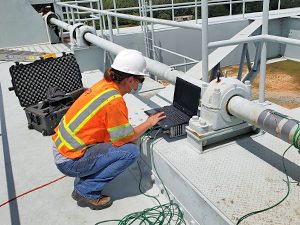
International Women in Engineering Day allows us to celebrate all female engineers across the world. It is important to mark the day because we must show people that women can be great engineers. I believe that everyone should be able to go into whatever career best suits their strengths. This should be regardless of any stereotypes or judgement from others.
In high school, when I was 17 years old, I took an auto shop class. I did not take home economics or drama, which might have been more stereotypical for the young women my age. In a class full of about 30 boys, I was one of two girls, and I excelled. Two specific memories stand out of projects we worked on. The first was to take apart a V8 engine block and put it back together, allowing it to successfully turn. It was a group project, and I often had to redirect my group members on their reassembly. “That rocker arm is backwards,” I said. “How can you tell?” he asked. “Because it’s not going to rock like that!” I responded.
The second project was a timed disassembling and reassembling of a drum brake, similar to soldiers in the army being timed with their rifles. I had the best time in the class. (I also was the one who likely practiced the most to get to that point.) This was because I actually enjoyed what I was doing. I wasn’t there because someone told me I should. I took the auto shop class because I was intrigued by it and did not pay lip service to the people who may have tried to persuade me to take the home economics class.
Once again, I am so grateful for the choices that I have made. Towards the end of the class, I asked my auto shop instructor: “Who comes up with these things?” to which he replied, “engineers!” Something I will never forget and the start of my path to where I am today.
The point of International Women in Engineering Day is to celebrate those women who have made the choices to become engineers, and perhaps even more importantly, to show the younger generations that you can be successful in any field YOU choose. I will be celebrating the day by spreading the word through social media posts for my IEEE WIE (Institute of Electrical and Electronic Engineers, Women in Engineering) group and its programme WINC (WIE International Network Connections).
Engineering role models
The most influential engineering role models I have had were two of my professors at Stevens Institute of Technology. Both were amazing teachers. The first was from the structural department and taught a class called Mechanics of Solids. The class mainly covered how materials react to applied forces, moments, and torque as well as the resulting stresses and strains.
This class was a split between mechanical and structural so it was an ideal match for me. I ended up finishing the course, becoming a grader for the class, and finally a teacher’s assistant once I had completed my bachelor’s. He always said I was very methodical in my approach to homework and exams, which is why he offered me the position.
His feedback helped me be more aware of a strength I had for structuring problems and their solutions, and what a valuable quality it is in the engineering field. This professor also had such a positive outlook on life and cared deeply about his students, as a mentor to all. As we worked together, he would randomly quiz me on engineering principles to make sure I was staying sharp.
The second professor was from the mechanical department. He was new to the school when I took his class, and he has since received several teaching awards. It was easy to see why — he was very knowledgeable and always willing to answer questions, but I think what made him so influential was that he built structure into the lectures and did a wonderful job of breaking things down to be easily understandable for all students.
One of my favorite classes of his was Machine Dynamics, where he covered topics like designing gears and linkage systems. The information I learned in both Machine Dynamics and Mechanics of Solids covers topics that I still use in my career today, and I am thankful that I had exceptional teachers to ground those foundations.
Busy, motivated and integrated: Becoming a greater engineer
What I am most excited about is the next phase of my career, as I am very goal-oriented. I am looking forward to taking on leadership roles and having more ownership over my work. I am eager to have opportunities to develop innovative solutions for our engineering designs and to continue to progress as a multidisciplinary technical expert. I am analytical by nature, and I know I have the ability to be a great engineer. My determination and resilience will be huge assets for me as I pursue my goals.
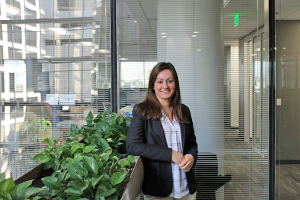
The company is focused on people, building relationships, and on the quality of the work. I work within the movable bridge group located in Tampa, Florida which has some of the strongest engineers working in movable bridges. The Florida group is made of mechanical, structural, and electrical power and controls specialists creating quite a powerful team where we each contribute to providing an overall product of excellent quality.
HDR also has a great workshare programme that encourages us to work across the country with other offices. This allows for not only sharing workload but also sharing our knowledge and lessons learned, having our clients’ best interests in mind. In this sense, the team transcends the limits of a local office and becomes a collaboration at a global level. It keeps us busy, motivated, and integrated.
There are even employee network groups within the company focused on inclusion and diversity. I am part of the Women Employee Network Group. HDR also contributes back to the community on a large scale by donating to non-profit organisations through the HDR Foundation and on a smaller scale by creating events such as a beach cleanup, which I had participated in. With the company values so close to my own, it makes it easy to be proud of where I work.
I now look forward to my future at HDR. I am excited to continue to grow my technical skills and to share my knowledge and expertise with others. I am especially aware of the importance of this on days like International Women in Engineering Day.

